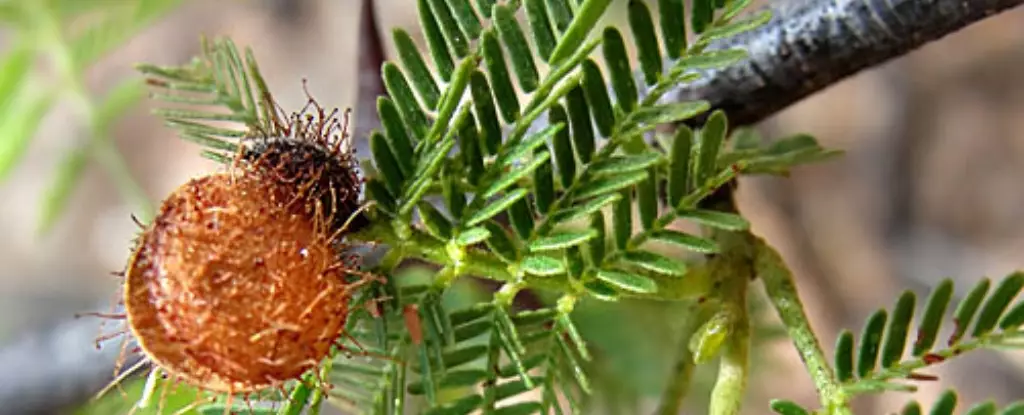In the constant evolution of mental health treatments, the resurgence of traditional Indigenous practices is capturing the attention of the scientific community. Central to this revival is the jurema preta plant, revered in Brazilian Indigenous rituals for centuries. What was once a ritualistic element, used to connect with spiritual realms, is transforming into a focal point for modern psychiatric treatment, particularly for depression. The dimethyltryptamine (DMT) contained in the root of the jurema preta is now being explored as a formidable ally against chronic depression, offering a glimmer of hope for those who have navigated the often-laden journey of mental illness.
From Streets to Science
The story of Guaracy Carvajal epitomizes the gravelly path some individuals walk while grappling with depression. At 31, Carvajal, a software engineer, turned to the streets to acquire plant roots, extracting DMT through methods highlighted online. His experiences with jurema preta revealed a newfound clarity, as he described a profound sense of resolution in his life upon using the drug. This reflects a broader theme where individuals, often disenchanted by conventional treatments, venture into alternative therapies. While some may view this approach skeptically, it emphasizes the desperation and quest for relief that defines many people’s experiences with mental health.
Yet, the nuanced journey of individuals experimenting with substances like DMT raises pressing questions about access, efficacy, and safety. Is it merely a matter of personal exploration or a pathway dictated by the inadequacies of established psychiatric options? The surge in interest surrounding psychedelics must be accompanied by rigorous scientific inquiry to discern the potential and limitations of these substances within clinical contexts.
Scientific Insights into Psychedelic Healing
Physicist Draulio Araujo, who leads research at the Brain Institute of the Federal University of Rio Grande do Norte, offers insight into the potential benefits of DMT. His work with patients illustrates that the effects can be remarkably swift, with significant improvements noted just a day after treatment. Unlike traditional medications that may take weeks or even months to show benefits, the responsiveness of DMT can be life-altering.
However, Araujo proceeds with caution, asserting that while the flowers of hope seem luminous in this psychedelic garden, DMT is not a universal remedy. Each individual’s journey with depression is unique, and Araujo emphasizes that psychedelics require careful integration with psychological support. This highlights the need for personalized treatment plans that embrace both the medicinal and therapeutic aspects of recovery.
From Ceremony to Clinical Setting
The contrasting worlds of Indigenous ceremonies and scientific research underscore the complexities surrounding the use of jurema. In traditional settings, participants like Joyce Souza express a transformative experience through the consumption of jurema, noting an enhanced connection with one’s inner self and the spiritual dimension. This vivid description challenges the stigma surrounding psychedelics, framing them not as mere recreational substances, but as catalysts for deep introspection and healing.
As scientific inquiry advances, Araujo aims to broaden the parameters of DMT research. His goal is ambitious: a comprehensive study involving 100 participants. This initiative seeks to unravel when, and if, jurema-derived treatments can successfully transition from ritualistic practices to established clinical settings, offering systematic support for those battling mental health issues.
Psychedelics and Cultural Legacies
Brazil’s unique position in the exploration of DMT relates closely to its cultural backdrop. The country’s acceptance of jurema, particularly among its Indigenous populations, provides a rich tapestry of history and context for more expansive research. However, while cultivation and possession persist without restrictions, the legal landscape surrounding the consumption of DMT complicates broader accessibility. Scientific exploration must advocate for navigating these legislative hoops to unearth the true potential of this plant.
A Glimpse into the Future of Healing
The journey of jurema preta illustrates the delicate balance between ancient healing practices and contemporary scientific inquiry. As the world begins to recognize the potential of psychedelics in therapeutic settings, the stories of individuals like Carvajal emerge as powerful testaments to resilience and hope. The integration of Indigenous knowledge and scientific research embodies a promising frontier in mental health treatment, beckoning an era where healing is holistic and potentially revolutionary.

